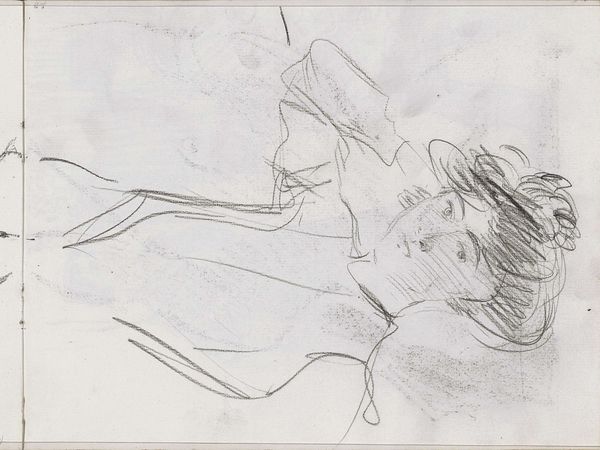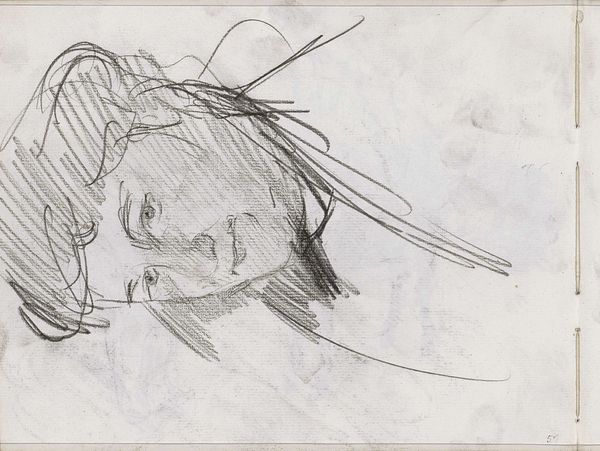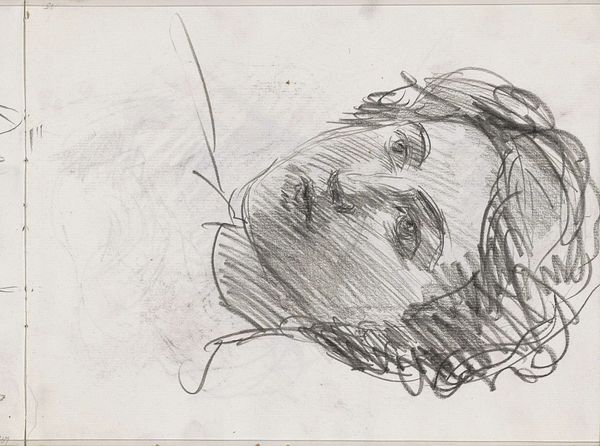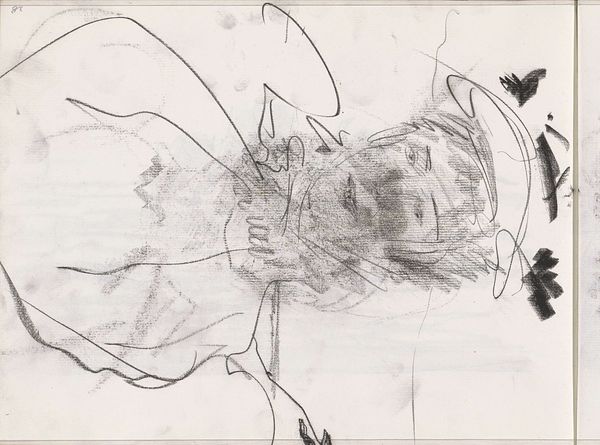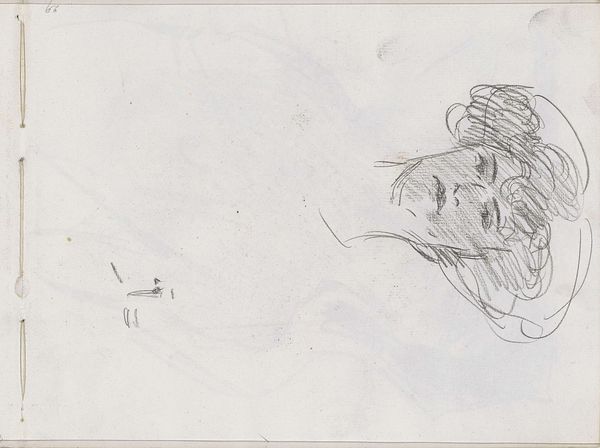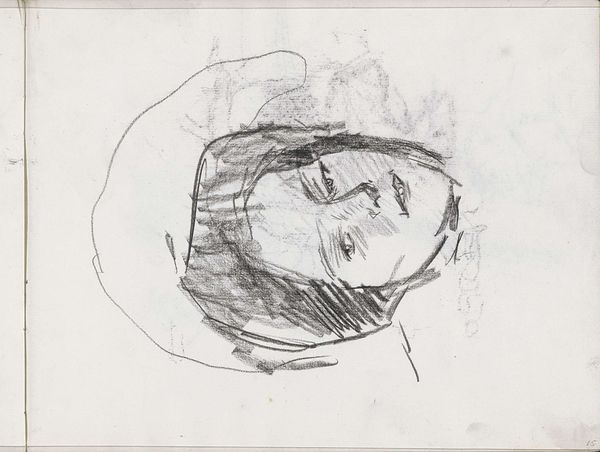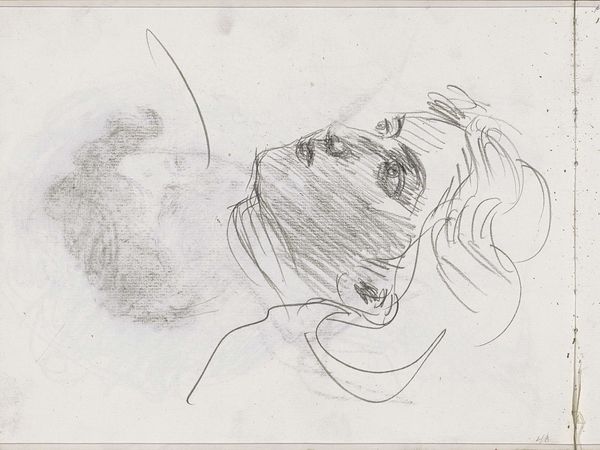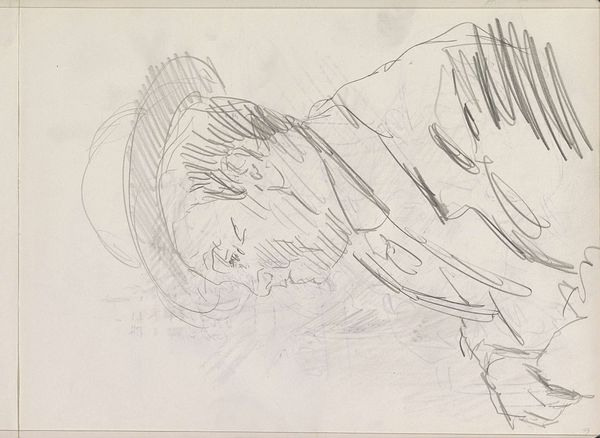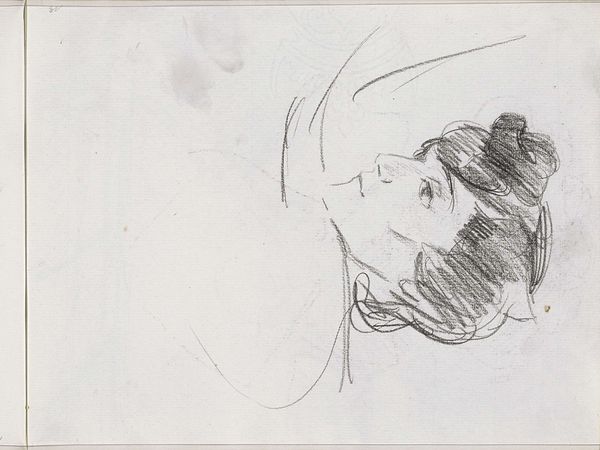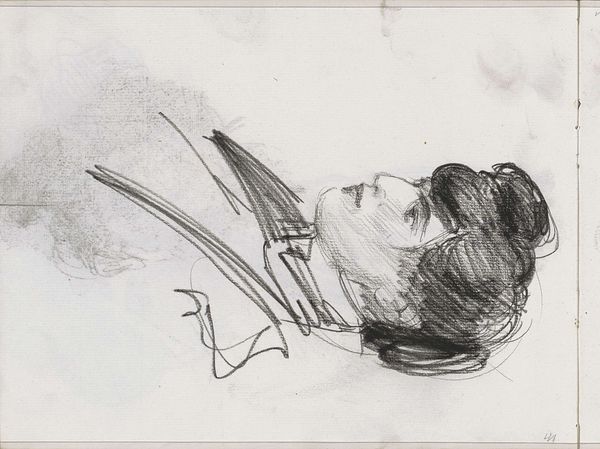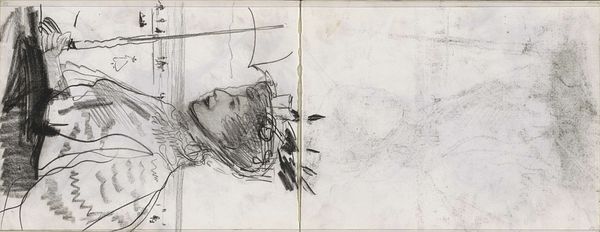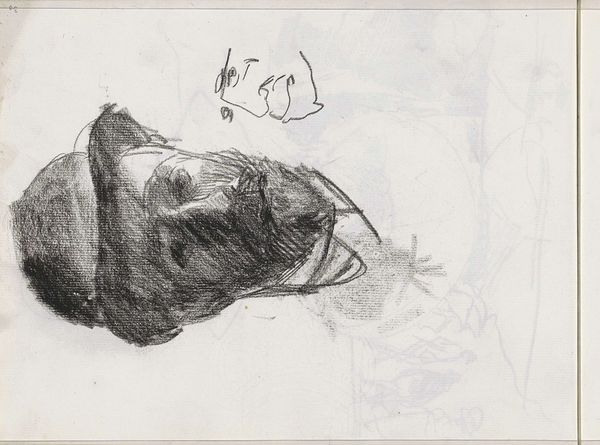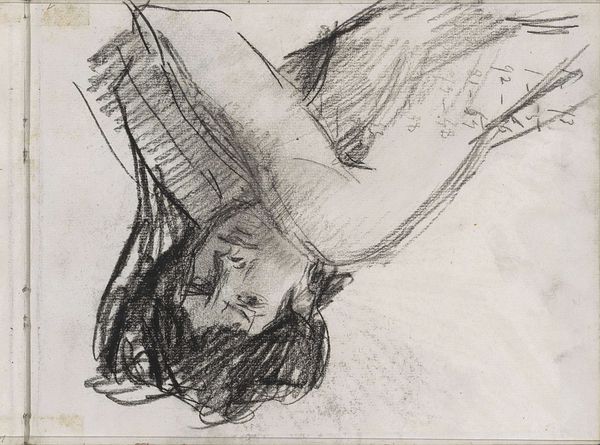
Copyright: Rijks Museum: Open Domain
Editor: This is "Vrouwenhoofd," or "Head of a Woman," a pencil drawing on paper by Isaac Israels, made sometime between 1875 and 1934. It strikes me as very intimate, almost like a glimpse into a private moment. What stands out to you about this piece? Curator: What grabs my attention is the implied narrative around portraiture itself. Traditionally, portraiture, especially during this period, was often an act of commemorating the elite, the powerful, primarily men. This sketch disrupts that expectation. Editor: How so? Curator: Notice the unfinished quality, the subject’s downward gaze, the lack of idealization. This resists the conventions that solidified power structures and societal norms in portraiture. Does it appear to you that the subject is turning her head away from something, perhaps? Is she participating in a power structure that doesn’t represent her? Editor: I see what you mean! The sketch feels very immediate, and it avoids the sort of grandstanding often seen in formal portraits. It’s as though Israels is prioritizing capturing a feeling or fleeting moment, and not necessarily an enduring likeness. Curator: Exactly. This also leads us to consider Israels’ own positionality as a male artist capturing a female subject. How do we negotiate that dynamic while engaging with the work? Is he subverting the male gaze or perpetuating it? Editor: That's definitely something to consider further. I'm beginning to look at Israels’ choices as potential commentary on social expectations. Curator: It’s a fantastic starting point. It reminds us to look at the art and its social milieu and continue to ask difficult, relevant questions about the relationships represented within the image. Editor: I will certainly carry these points in mind. Thanks so much!
Comments
No comments
Be the first to comment and join the conversation on the ultimate creative platform.
